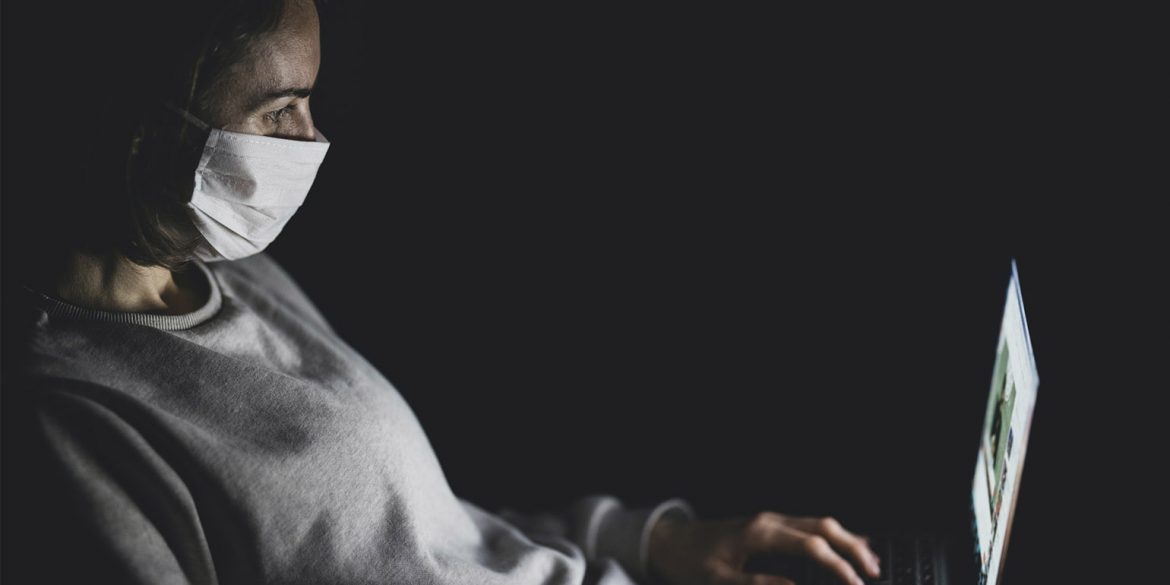As a final year student pursuing an undergraduate degree during the COVID-19 outbreak, life has changed drastically overnight. On a normal weekday, I’d travel an hour to attend college and then return home in the evening after an action-packed day of attending lectures and meeting friends. Now, I wake up and log into my classroom from bed, uncertain about when I will be able to give my university exams and graduate.
The lockdown has changed how we as students get educated. Since colleges around the country have been ordered shut, institutions have had to find new ways of teaching their students without putting them at risk. They did so by simulating online classrooms through video-conferencing applications like Zoom and LanSchool.
My college, Indian School of Design and Innovation in Mumbai (ISDI) moved to online classes early on with the first online class being held on the 19th of March, much before the lockdown. No changes were made to the timetables and students are required to attend online classes from 9 am, which sometimes go on till 4 pm, just like they did before the lockdown.
It is also much easier to answer questions in an online classroom without feeling the pressure of all the students staring at you.

Setting of a virtual classroom
A nine-digit Zoom meeting ID is shared with us before the lecture. Before beginning, our attendance is recorded. Teachers share their presentations on the app.; and students can personally message the teacher for doubts and queries without disturbing the class.
Though we retained more information in a physical classroom, the convenience of attending classes from home is unimaginable. Normally, I’d have to travel by train for an hour in to make it to the college. This left me with little energy to in the class. Now I use the time I saved doing my assignments and preparing for GMAT.
It is also much easier to answer questions in an online classroom without feeling the pressure of all the students staring at you. This leads to more interactive sessions with in depth discussions about a desired topic. Also, teachers are always available and willing to answer any doubts.
Being at home also means more distractions than a classroom. We miss the constant policing that made sure we weren’t using phones or talking to a friend. To tackle this, teachers need to come up with creative and engaging ways to teach, a skill not all teachers possess.
Teachers unanimously agreed that student attendance and class participation has increased since the introduction of online classes. Now that class participation holds weightage in assessment, students are eager to participate in discussions, and the teacher’s role is often that of a mediator.
Each teacher has students who they help mentor for their passion projects or start-ups, this extra time has allowed them to invest more time in mentoring. On a normal day in college, they are burdened with reports and staff meetings resulting in fewer hours of student-teacher interaction
Students also have more time to prepare for the annual year-end exhibition. Easy access to teachers during the lockdown is helping in the preparation.

Still, missing college
The most noticeable problem is technology—slower internet connections lead to frozen screens and poor audio quality. This can be somewhat corrected if some people switch their webcams off, but then there is no face to face interaction.
Being at home also means more distractions than a classroom. We miss the constant policing that made sure we weren’t using phones or talking to a friend. To tackle this, teachers need to come up with creative and engaging ways to teach, a skill not all teachers possess.
Colleges also provide a lot of equipment essential to design students. Fashion students require mannequins and expensive sewing machines while art students require apparatus which is no longer available. All physical deliverables have become virtual designs which must be created through software such as Photoshop and AutoCAD.

Okay, but what’s our future?
The online classes conducted at design colleges are proving successful. The continuity of syllabus has not been affected. With an increase in attendance and class participation, it could actually prove to be a step towards a complete digital future.
But, it is also important to understand that it is a luxury limited only to the privileged. There is a wide disparity in the distribution of digital capabilities in India, where only a third of the population has access to reliable internet. While Greece uses state television to run classes for students who cannot afford online classes and the Italian government announced an €85 million aid package to support distance learning and to improve connectivity in isolated areas, India slacks behind.
Further, the urban unemployment rate shot up by 8.4% in mid-March. So even those with a job might not be able to hold on to it for too long.
The current situation has left us wondering our future entails. With the job market already at an all-time low, the COVID 19 outbreak has just made things worse. According to a study conducted by The Economic Times, hiring activity across the nation has reduced by over 18% with a predicted decline in the future. Further, the urban unemployment rate shot up by 8.4% in mid-March. So even those with a job might not be able to hold on to it for too long.
As for those who chose to pursue a master’s degree abroad, experts say that there could be an 18-month international travel ban implemented worldwide, resulting in additional candidates looking to join the workforce.
**

